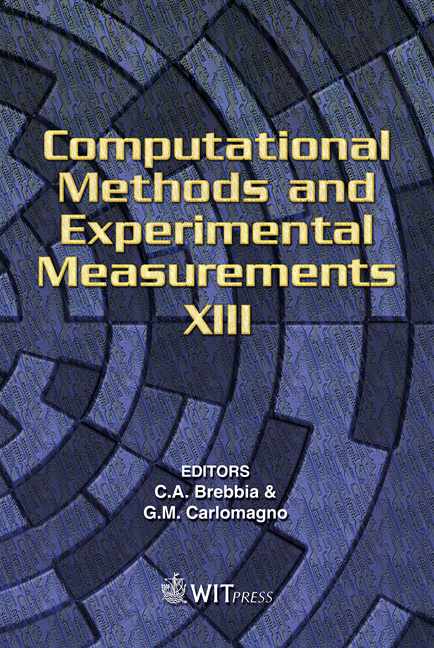Inverse Variational Principle Based Coupled Modeling Of Underground Structures
Price
Free (open access)
Transaction
Volume
46
Pages
10
Published
2007
Size
881 kb
Paper DOI
10.2495/CMEM070521
Copyright
WIT Press
Author(s)
P. Procházka
Abstract
In some previous papers of the author coupled numerical–experimental modeling of tunnels embedded in surrounding rock was based on minimization of a certain functional describing the steepest descend mode of differences of measured and computed values of stresses or displacements at selected points. The idea consisted of a choice of subdomains (patches), the eigenstrains in which were introduced using the unit impulse technique. Influence matrices were generated and the linear hull of eigenstrain effects together with the optimization problem lead to the identification of plastic stresses inside the domain describing the surrounding rock. Consequently, a nonlinear model in numerical analysis can be improved using eigenparameters as design parameters in optimization. The only problem remaining is how to select the patches. In this paper inverse variational principles are applied to help solve this principal problem. The 2D problem is solved with moving patches (support subdomains) with uniformly introduced eigenstrains. Keywords: coupled modeling, tunnel face stability, Inverse variational principles, Desai’s model. 1 Introduction Using a very powerful tool, a combination of Transformation field analysis (TFA) and a certain plasticity rule (possibly softening included), back analysis of structures can be regarded as seeking the optimal distribution of eigenparameters (eigenstrains or eigenstresses) in the domain describing undeformed rock in a certain sense. For the first time the TFA was applied to optimization of prestressing of composite structures, [1]. The eigenparameters can represent many phenomena (not only prestress), and also the influence of plastic
Keywords
coupled modeling, tunnel face stability, Inverse variational principles, Desai’s model.





